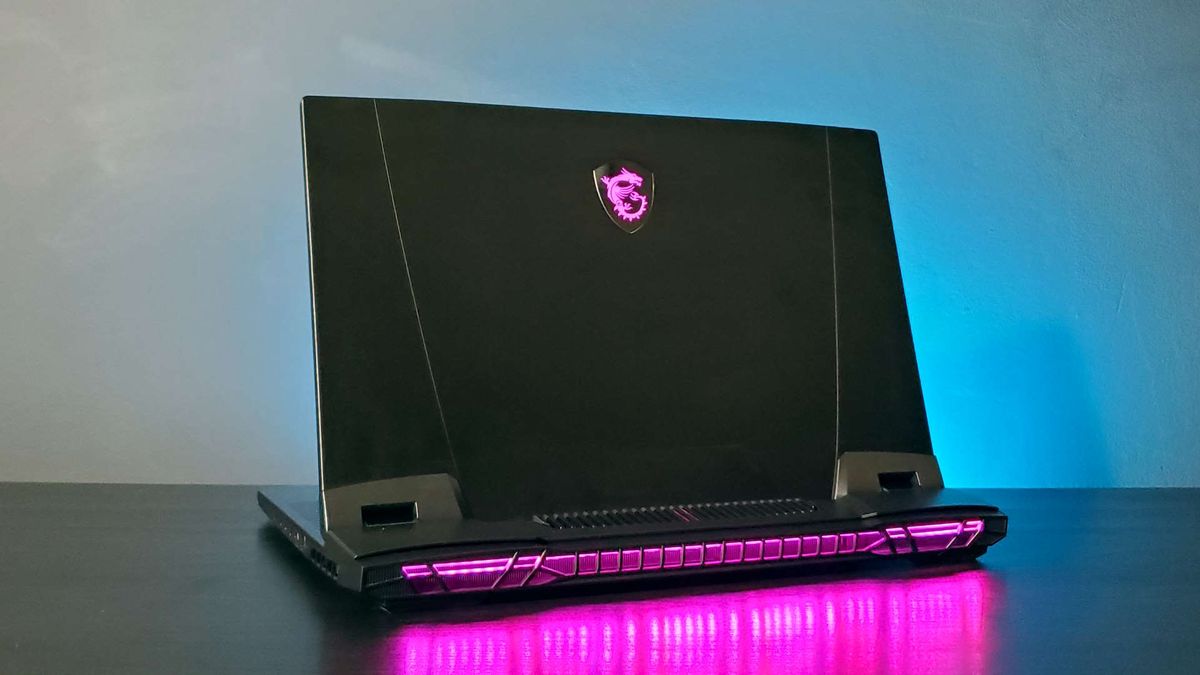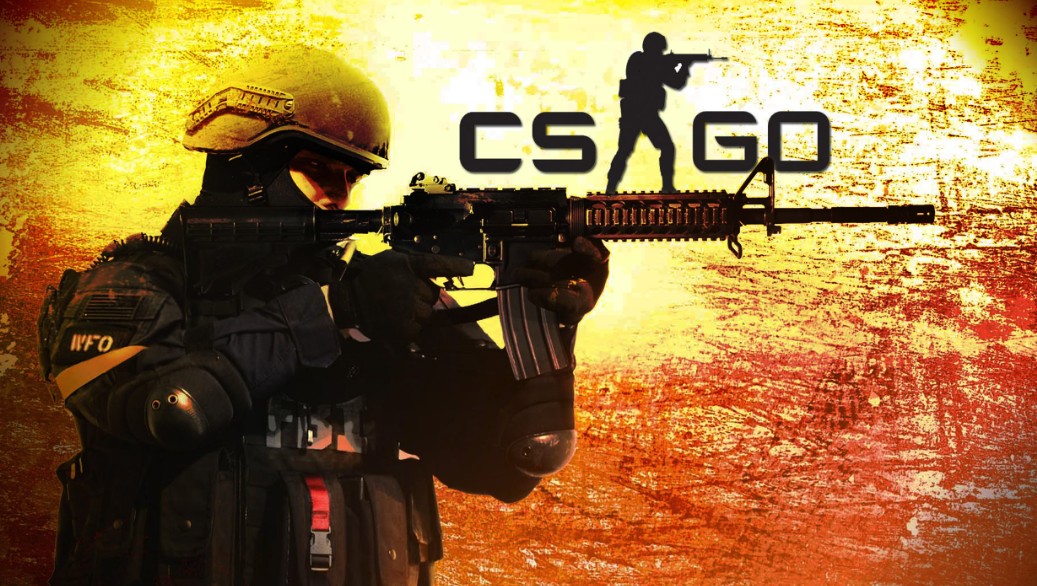
I think I actually hate it. Part of that, I will admit, is down to my deep-seated frustration at the ever-increasing price of modern gaming PC hardware, pricked by the fact that MSI has tagged the Titan GT77 HX with a $5,300 sticker price. Ever was it so for gaming laptops, that their price tags will always be far in advance of what you’d pay for a desktop machine of equivalent. But this is getting ridiculous.
It is, however, entirely possible for a piece of hardware to be expensive and good value. All I want is to feel like I’ve not been ripped off. And honestly, with the Titan GT77 I feel like all I’ve got is a gaming laptop anachronism with a little modern tech slapped inside.
That is entirely unfair in real terms—MSI has tried to give us the best of everything—but it is still a feeling I can’t shake. Mostly because, while the Titan GT77 HX certainly is sporting the best of the best components, it just doesn’t come together in anything like a desirable package. And if I’d dropped this much money on a gaming machine the buyer’s remorse would be like bile permanently tickling the back of my throat. Especially if I’d seen what other manufacturers were doing with the mobile RTX 4090 and Intel Raptor Lake CPU combination.
And I have. I’ve tested both the Razer Blade 16 (opens in new tab) and the Asus Zephyrus M16 (opens in new tab) now; machines at least $1,000 cheaper than this that I would absolutely rather have… even if they were priced at the exact same level.
For one thing, the Titan GT77 HX is monstrously big. I get that’s its ‘thing’; it’s a Titan after all. But c’mon, this thing is silly. If you remember the old Lamborghini laptops Asus made (opens in new tab) you’ll get the idea of the styling on this notebook. And if you don’t, think fat exhaust vents, angular stying, and a rather large posterior poking out from behind the screen.
GT77 HX specs
CPU: Intel Core i9 13950HX
Cores | Threads: 24 | 32
Boost clock: 5.5GHz
GPU: Nvidia RTX 4090 (175W)
Cores: 9728
VRAM: 16GB GDDR6
System Memory: 64GB DDR5-4000
Storage: 4TB NVMe SSD
Screen: 17.3-inch
Resolution: UHD 144Hz
Price: $5,300 (opens in new tab)| £5,300 (opens in new tab)
Asus has mended its ways, as evidenced by its Zephyrus range of laptops, while this makes MSI look like it’s stuck in the late-2000s. A 17-inch desktop-replacement laptop is always going to be chonk, but with modern 16-inch machines I think I’d go with one of them any time.
This is probably the time I’m meant to start talking about the specs, and they’re over there ➡️ enjoy. For me, the spec is absolutely not the core of the issue. Essentially, it’s the same specification as the $1,000 cheaper Razer Blade 16, but with twice the memory and SSD capacity. That means you get a 175W version of Nvidia’s mobile RTX 4090. Which is actually a desktop RTX 4080 (opens in new tab) GPU—so fast, just not actual RTX 4090-fast.
Then there’s the same 24-core, 32-thread Core i9 13950HX CPU (opens in new tab). Again, fast. Legit fast. If you want to do proper workstation-class productivity shiz on this MSI machine then you’ll be well served by this serious desktop-replacement spec.
And in terms of its benchmarks it’s the fastest gaming laptop I’ve ever tested. Yet I still can’t muster any enthusiasm for it despite posting such impressive performance metrics. Its larger chassis and more aggressive cooling means that it’s able to get more out of the same core config as the Blade 16, but that’s also why I feel such disdain for the Titan GT77 HX.
1440p gaming performance
4K gaming performance
To hit those performance heights the system gets incredibly loud. You have to set it to Extreme Performance to get those numbers and it’s a benchmark mode and nothing else. You’d never want to legit run it at those settings when you were actually using it. Even when it’s at the MSI mandated Balanced mode the fan noise feels more intrusive than on either the Asus or Razer RTX 4090 machines I’ve tested.
It’s not just when gaming either. As I’m writing this, having used the machine as my work rig throughout the day, I’ve just restarted Windows with a couple of updates to its myriad MSI apps and suddenly it’s decided that downloading a game too requires the fans to be whirring up to a distracting level. Calm down, it’s only Cyberpunk.
System performance
So yeah, while all these numbers look impressive they come at a cost in terms of both your operational sanity while running the laptop and, of course, in terms of your actual bank account. Those extra few frames per second aren’t, for me, worth the extra volume or the extra $1,000.
But what do you get for that extra cash? As mentioned there is a workstation amount of RAM at 64GB, and lots of SSD storage space. And you also get a mechanical keyboard. It uses Cherry MX switches, and I don’t have to do anything other than look at the chassis to know that, because there’s a huge backlit Cherry MX logo under the keyboard. And it looks pretty gross.
As a keyboard… it’s fine. I’m a genuine keyboard obsessive. Love me some mech switches with barely noticeable differences in actuation between them. But I would be 100{18875d16fb0f706a77d6d07e16021550e0abfa6771e72d372d5d32476b7d07ec} happy with the Asus Zephyrus M16 key switches—these low profile mechanical switches on the MSI don’t make typing a pleasurable enough experience for me to feel like I’m getting a completely premium ride.
And it’s not completely mechanical, either. The horribly squished numpad uses membrane switches, as do the other small scale keys. I also do not need a laptop numpad, especially one so crushed into the side as this miserable looking set of keys. And if I did, well, Lenovo’s got me covered with 16-inch machines (opens in new tab) with decent-sized numerical keypads.
You also get a lot of software. I’m not going to call it bloatware—it may not be strictly necessary, but it’s mostly all there to control different aspects of the machine. But there are myriad MSI applications to control things like the GPU and CPU modes and the fans, plus the SteelSeries app for the keyboard backlighting. There’s also a Nahimic app for the audio and, of course, Norton just to annoy you with messages about how your unwanted licence has expired.
I prefer even the Razer Synapse software compared to having to use so many discrete apps. And it’s made me feel even more fondly about the Armoury Crate software in the Asus Zephyrus. Normally I can’t stand Asus’ app, but it’s so useful in a laptop setup because it controls everything.
Ah, but the screen, what of the screen? It’s another 4K mini LED option, which ought to make up for some of the Titan GT77’s other shortcomings. But it’s the weakest of the three mini LED laptop panels I’ve tested in this new generation so far. And I’ve realised I’ve become rather attached to the 16:10 aspect ratio of the others. The 16:9 3840 x 2160 display on the Titan is 17-inches across but with the big MSI-logo’d chin under the screen it feels a little foreshortened.
Though is it ‘MSI’ now? The logo seems to read IIISI to me.
It is bright, however, and another decent HDR option that doesn’t require me to disable the feature in Windows in order to use it with normal SDR environs. I’m not as pleased with the backlighting, though, and that could be down to the fact that the screen is broader in scope and the dimming zones are therefore larger and more noticeable—as they are in the horrible mini LED desktop monitors we’ve seen recently.
The panel backlighting is not an issue in-game, and it looks punchy in HDR-compatible titles. Though honestly, you’ll still be too bothered by the noise to care about how it looks.
In the end I think a large part of my issue with the MSI Titan GT77 HX is that notion of not feeling like it’s a premium machine. For over $5,000 I need it to feel impossibly well-crafted. And, while it’s obviously been decently engineered, it doesn’t feel premium to me. It feels like a million off-the-shelf Clevo chassis I’ve seen in stock at Bob’s Gaming PCs and Lube, just one with the latest and greatest PC hardware stuck inside.
Its excesses in size, performance, and spec, however, don’t impress me. It’s easy to throw all that into a laptop, it’s quite another to make it feel like the parts all truly fit together as a complete package. Those excesses then feel almost vulgar, not luxurious, and I’m now just looking forward to putting it back in the box and returning it from whence it came.









